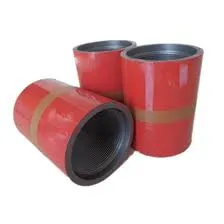- Afrikaans
- Albanian
- Amharic
- Arabic
- Armenian
- Azerbaijani
- Basque
- Belarusian
- Bengali
- Bosnian
- Bulgarian
- Catalan
- Cebuano
- Corsican
- Croatian
- Czech
- Danish
- Dutch
- English
- Esperanto
- Estonian
- Finnish
- French
- Frisian
- Galician
- Georgian
- German
- Greek
- Gujarati
- Haitian Creole
- hausa
- hawaiian
- Hebrew
- Hindi
- Miao
- Hungarian
- Icelandic
- igbo
- Indonesian
- irish
- Italian
- Japanese
- Javanese
- Kannada
- kazakh
- Khmer
- Rwandese
- Korean
- Kurdish
- Kyrgyz
- Lao
- Latin
- Latvian
- Lithuanian
- Luxembourgish
- Macedonian
- Malgashi
- Malay
- Malayalam
- Maltese
- Maori
- Marathi
- Mongolian
- Myanmar
- Nepali
- Norwegian
- Norwegian
- Occitan
- Pashto
- Persian
- Polish
- Portuguese
- Punjabi
- Romanian
- Russian
- Samoan
- Scottish Gaelic
- Serbian
- Sesotho
- Shona
- Sindhi
- Sinhala
- Slovak
- Slovenian
- Somali
- Spanish
- Sundanese
- Swahili
- Swedish
- Tagalog
- Tajik
- Tamil
- Tatar
- Telugu
- Thai
- Turkish
- Turkmen
- Ukrainian
- Urdu
- Uighur
- Uzbek
- Vietnamese
- Welsh
- Bantu
- Yiddish
- Yoruba
- Zulu
seating nipple tubing
Understanding Seating Nipple Tubing A Key Component in Oil and Gas Operations
In the oil and gas industry, efficient extraction and transportation of resources depend heavily on specialized equipment and components. One such critical component is the seating nipple tubing, an integral part of well completion and production operations. Its role becomes particularly pivotal during well interventions and the installation of various downhole equipment.
What is Seating Nipple Tubing?
Seating nipple tubing is a specific type of tubing utilized in the completion of oil and gas wells. It serves as a seat for downhole tools, such as plugs or valves, which can be latched into place to control the flow of fluids within the reservoir. The design and functionality of seating nipples allow for effective management of pressure and fluid movement, which is crucial for maximizing hydrocarbon recovery.
Design and Functionality
Seating nipple tubing is typically made from high-grade steel, showcasing resistance to corrosion and mechanical stress. The tubing is designed with specific profiles that allow for the secure placement of various tools. Each seating nipple features a unique internal profile that is compatible with particular downhole devices, ensuring a snug fit that can withstand the rigors of high-pressure environments.
The primary function of the seating nipple is to provide a mechanical anchor for the downhole tools. When operators need to isolate sections of the well, such as during production adjustments or well testing, they can use seating nipple tubing to effectively position tools at precise depths. This allows for controlled operations that can minimize unnecessary disruptions in production.
Applications in Well Operations
Seating nipple tubing finds extensive application in several aspects of well operations. One of its primary uses is in the installation of packers and plugs, which are essential for isolating zones to prevent unexpected fluid migrations and ensure optimal production from targeted reservoirs. During well completion, seating nipples enable operators to place these devices accurately, granting them control over the flow paths in the well.
seating nipple tubing

In addition to isolation, seating nipple tubing is also crucial during workovers and interventions. Operators can use the existing nipple setups to access downhole equipment without the need for complete well abandonment. This aspect significantly reduces operational costs and minimizes non-productive time, which is a critical factor for profitability in the industry.
Advantages of Using Seating Nipple Tubing
The use of seating nipple tubing offers numerous advantages. Firstly, it enhances the efficiency of well operations by ensuring reliable tool placement and retrieval. This reliability translates into reduced risks of equipment failure and a lower probability of costly downtimes.
Secondly, seating nipples facilitate the use of advanced technologies in well management. With increasing advancements in downhole tools, the ability to integrate various devices quickly allows for adaptable and responsive operations in the face of changing reservoir conditions. As the industry shifts towards more intelligent and automated solutions, seating nipple tubing plays a vital role in these developments.
Challenges and Considerations
Despite their numerous advantages, the usage of seating nipple tubing is not without challenges. Corrosion, mechanical wear, and operational complexities can pose risks during installation and retrieval. Therefore, careful planning, selection of materials, and adherence to best practices are paramount to ensure the longevity and reliability of seating nipple systems.
Conclusion
Seating nipple tubing is a fundamental element in the oil and gas sector, significantly influencing the efficiency of well operations. As technology evolves and the industry progresses toward more sophisticated methods of resource extraction, the importance of reliable and effective seating nipples will only continue to grow. Understanding their design, functionality, and applications is essential for professionals in the field, ensuring that they leverage these components to maximize productivity and safety in their operations.
-
Well Casing Extension Couplings – Applications and InstallationNewsJun.06,2025
-
Types of Crossover Subs in Drilling & CompletionNewsJun.06,2025
-
Key Features of High-Quality Tubing Pup JointsNewsJun.06,2025
-
Installation and Maintenance Tips for Steel Couplings for PipeNewsJun.06,2025
-
How to Select the Right Pup Joint for Oil & Gas OperationsNewsJun.06,2025
-
Applications of Stainless Steel Pipe CouplingsNewsJun.06,2025







